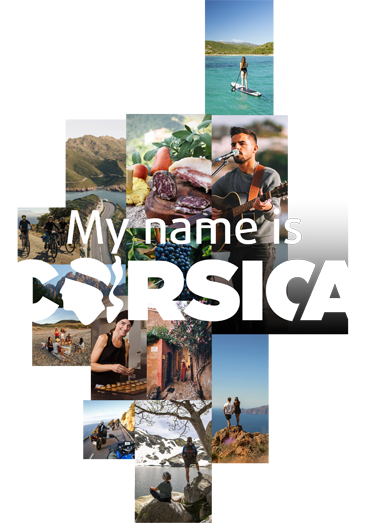Rechercher...
Explore Corsica
Autumn in the Bastia region
The Bastia region, Mediterranean charm

Stepping off the ferry at Bastia, head into the heart of the city where, at the foot of the Citadel sits a district that is home to the fishing port and marina. To get a view of the ensemble you need to head out to the Dragon Jetty that was constructed in the XIX Century. From here on a clear day (often on days when the "Libecciu" wind blows) you can spot the Tuscan archipelago: Elba, Capraia and Monte Cristo.
After having tasted a Pietra, a Corsican beer brewed using malt and chestnut flour, on the Place St Nicolas, stroll along the maze of narrow streets in theTerra Vecchia and Terra Nova quarters, and head for the Jardin Romieu along the stairway that rises from the south quay.
Baroque churches, oratories in the Rococo style and convents represent the rich religious heritage of Bastia and come to the fore during religious events.
Bastia is a very dynamic city and from spring onwards you can enjoy a great many concerts of polyphonic singing or Corsican song that are sure to charm you.
Take the La Marana route in the direction of the Biguglia Pond nature reserve, a vast stretch of water that is the largest body of water on the island and one of the last refuges of nesting and migratory birds. This site of exceptional ecological interest is home to more than 200 species of water birds. Take your binoculars and observe the kingfishers, the flight of the marsh harrier and the variety of migratory species that stop over at the pond, such as the greater flamingo. You can enjoy free access to the reserve from the car park that is opposite thebeach of La Marana.
Cap Corse on foot, by bike or by car
The Cap Corse can be visited in one day, but if you have a bit more time you can let yourself be seduced by this land of sailors and fishermen.
Take the coastal route and discover Erbalunga, a picturesque village at the water’s edge, with its ruined Genoese tower that has charmed numerous painters and is sure to make an impression on you. Following this route to the north, the traditional gardens of Cap Corse will give you the chance to stock up on organic seasonal fruit and vegetables.
In Luri, at the col de Sainte Lucie, take the path that leads to the Tour de Sénèque, here the view is splendid. Legend tells us that Seneca, the Roman philosopher, spent a large part of his exile in this tower, although this watchtower and defensive structure was actually medieval in its construction. The confusion came from the fact that the tower was situated at a place known as A Seneca.
Head back to the coast and to Santa Severa, where you can take the route towards the marina of Macinaggio where fishing boats and pleasure boats will help you explore the coastline of the Cap Corse, the nature reserve or even the protected nature sites that are accessible only on foot or by boat. Why not dive into the turquoise waters of the Tyrrhenian Sea.
Macinaggio is the departure point of the coastal path that leads to the beach of Barcaggio, a small port at the tip of the cape, providing an exceptional autumn stroll that flanks the Finocchiarola reserve.
If you are on two wheels, make the most of the descent from Moulin Mattei to the port of Centuri, passing through thehamlet of Cannelle, and surround yourself in the fragrances of the Maquis and admire the superb views and imposing Tuscan inspired buildings known as the « homes of the Americans » that belong to residents of Cap Corse that made their fortune across the Atlantic. If the mood takes you, you can enjoy lunch at the port ofCenturi and treat yourself to a dish of grilled lobster with a glass of AOC Cap Corse white.
This winding coastal route gives you an aerial view of the cape and ends up in one of Corsica’s most beautiful villages,Nonza, a fortified village that perches majestically 167 metres above the sea. Don’t hesitate to climb up to the square Paoline Tower, constructed under the orders of Pascal Paoli, providing a magnificent view with the grey beach as its backdrop, accessible along an interminable staircase that also takes you to the miraculous fountain of Sainte Julie.
Le Nebbio
Wander along the quays at the port ofSaint-Florent and pass through the narrow streets of the old town that will lead you to the parochial church of Ste Anne, dating from the XVII Century and open to the public, and to the « Piazza Posta », the square of the old post office where you can sample locally caught fish: John Dory, Denti fish red mullet and scorpionfish will be served depending on the catch.
Take advantage of the mild autumnal weather to cross theAgriates desert, this site that is protected by the Coastal Conservation Agency, providing beautiful walks and horse rides.
The Patrimonio wine route allows you to explore the estates and cellars of the wine region. It is a way of showing visitors the richness of the terroir, the grape varieties that are specific to Corsica and their diversity.
In the heights of the Nebbio, Murato boasts a history and heritage that is especially rich. Take the time to visit the church of San Michele, which Merimee claimed was « the most beautiful church he ever saw in Corsica ».
powered by cd-media.fr



